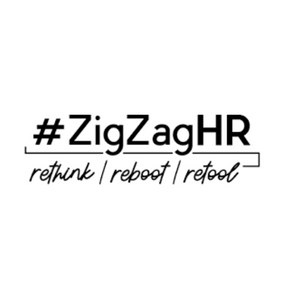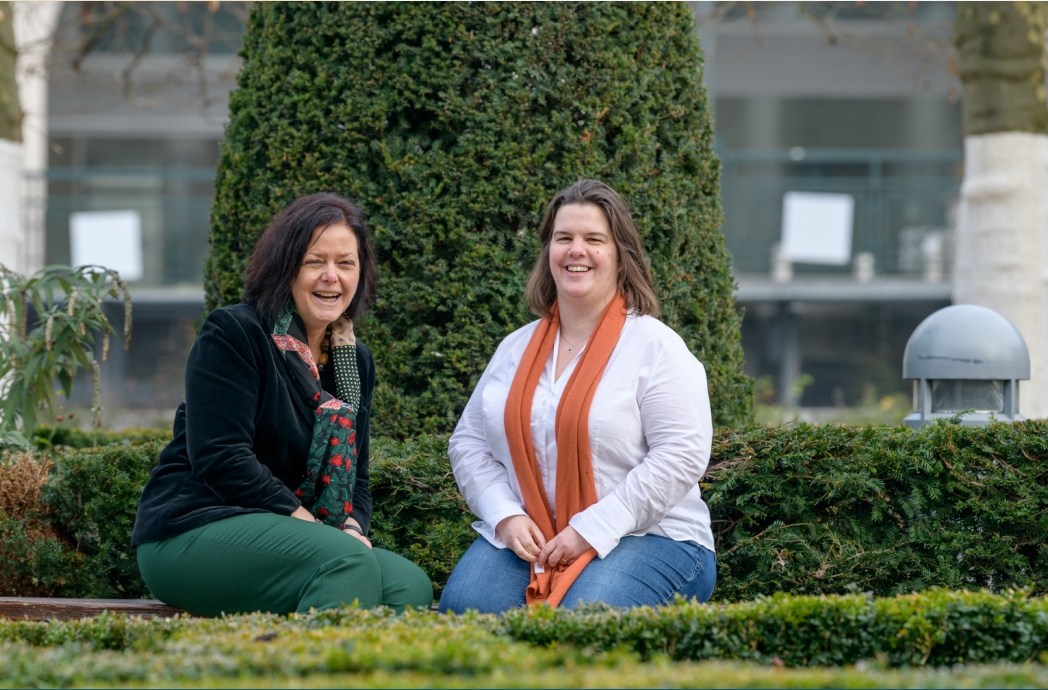Caring for your employees is caring for your business, says Anna Smets, Director of Business Solutions at Workplace Options. Each day, she sits around the table with Human Resources (HR) leaders, Total Rewards Managers, Health and Safety experts and board members. In this Spotlight issue, she connects us with Maïté Timmermans, the engine behind wellbeing at AXA Belgium, who sees 100% of her personal values reflected in the wellbeing policy of her employer. She brings 20 years of experience as a Prevention Advisor and incredible passion for her line of work.
Setting up a holistic wellbeing policy should not be a box to be checked on a busy agenda but rather, should be treated as a well-considered priority. After all, the effects of a well-considered wellbeing strategy can be seen in many critical areas, such as prevention, engagement, retention, motivation and definitely also on the overall bottom line. Does wellbeing mean more innovation, more production, and more profit? That is the right combination. And the best practices at AXA Belgium prove just that once again. Maïté Timmermans, Wellbeing Manager at AXA Belgium, tells us about the organisation, while Anna Smets, Director of Business Solutions at Workplace Options, explains the best practices of an Employee Assistance Programme (EAP).
BEST PRACTICES: AXA BELGIUM
AXA Belgium is part of the international insurance group and asset manager AXA, which has 126,000 employees worldwide and over 100 million customers in more than 50 countries. Prevention advisor Maïté Timmermans, together with an enthusiastic team of three wellbeing consultants, a wellbeing expert and two Prevention Advisors, is responsible for wellbeing at AXA Belgium.
And there, they have really been working on wellbeing for some time. In 2019, AXA Group launched the Global Health and Wellbeing Programme worldwide. At AXA Belgium, the EAP had already existed since 2016 and employees had access to a psychologist for support. But they wanted to go a step further and at the same time remove some of the barriers that prevented some employees from accessing the EAP in time for their needs. Wellbeing is important to AXA and they want to support all their employees in this, especially when it comes to providing preventative support.
BEST PRACTICE #1: FOCUS ON PREVENTION
Start from the realities of your employees
“We started from the reality of what employees needed to better balance a work and home life and gave them access to a network of services where it is more acceptable to ask for help,” explains Maïté Timmermans.
“We have called Workplace Options’ holistic EAP offering Care4U. Our employees and their family members can come to Care4U with their questions for support, often of a practical nature, which manifest themselves throughout life, and which can have an impact on wellbeing and cause stress that people bring to work. Think, for example, of a parent that needs a long-term care home. That requires a lot of administration and a lot of research. Think about a young mom who can’t find daycare. Think of any other major life event: a wedding, a death, or a relocation. It’s also sometimes easier to ask for support on behalf of someone else. People are helped directly by a psychologist from Workplace Options, who – and this is the big added value – also checks whether everything is okay with the employee. Because sometimes there is an underlying need for help. By supporting employees with practical problems, you take away stress, employees save time and they get in touch with a psychologist in an accessible way, a step they would otherwise put off for far too long. By normalizing professional support, you prevent people from sinking into emotional distress or – even worse – from ending up feeling burnt out or in depression.”
BEST PRACTICE #2: INVOLVE THE ENTIRE FAMILY
Make it easy for family members to ask for help as well
“As a paperless company, we made a conscious choice to have a brochure printed and send it to all our employees in Belgium. We also had a Care4U magnet made to hang on the fridge,” explains Maïté Timmermans. “By doing this, we wanted to ensure employees and their family members knew about ways to access the support services directly from their home. If we only promote Care4U digitally, via our intranet, family members of our employees would have much less access and knowledge about it.”
BEST PRACTICE #3: WELLBEING INVOLVES TEAMWORK
Human resources and prevention work in tandem
“Not every company has a Wellbeing Manager. Very often wellbeing falls on HR or the Prevention team and they are limited when it comes to wellbeing and what is legally required,” Anna Smets explains. “You get the best results when the Prevention and HR teams work closely together. At AXA Belgium, everyone knows Maité. You really need someone who puts wellbeing as a strategic priority and builds a positive perception around it. That’s where the big advantage lies.”
BEST PRACTICE #4: WELLBEING IS PART OF THE OVERALL COMPANY STRATEGY
Without resources, time or space, you can’t have an impact
“You can be the best Prevention Advisor or HR Manager, but if you don’t have the resources or if you don’t get the space, it’s impossible to make an impact,” said Maïté Timmermans. “At AXA, I do get the resources, the budget, the attention and the space to be able to do my job together with my team. At all-staff meetings, I am always given the space to talk and delivery my points, even if there are many other priorities on the agenda. In newsletters, I always get the opportunity to bring attention to Care4U and talk about wellbeing. And that, of course, is the foundation of what you need: wellbeing is at the forefront, taken seriously by everyone. More than that, wellbeing simply belongs within the culture of an organisation.”
BEST PRACTICE #5: SELF-CARE
A wellbeing manager must not lose sight of their own wellbeing
It doesn’t always have to be shouted from the rooftops, but the Wellbeing Manager themselves, in addition to the entire HR team and everyone around them must not lose sight of their own wellbeing either. How can you provide support to others or help and motivate them if you have become emotionally distressed without anyone in the company noticing? Everyone in the company who is ready to offer others the necessary aid should also be open to reaching out for external help.
THE ADVICE
Three tips for putting wellbeing on the strategic agenda
Anna Smets believes that – especially now, in light of the pandemic – wellbeing should be an obvious thing to focus on. Investing in the wellbeing of your employees can no longer be separated from achieving results in your company. She offers three tips to get wellbeing on the strategic agenda of your organisation (just like AXA Belgium).
TIP #1: IF IT IS UNKNOWN, IT WILL BE UNUSED
Many companies still don’t know what an Employee Assistance Programme is nor what its potential added value is for employees and for the organisation itself. Or they incorrectly believe that it is reserved for large organisations and that it costs a lot of money. The following tips might help repel some of these myths:
- Don’t necessarily call it an Employee Assistance Programme. That sounds heavy and doesn’t say enough about what it includes.
- Get an attractive name and invest in branding. At AXA, the program is called Care4U, but it could also be called “Your Personal Support Team,” or “Wellbeing @ (name of organisation)”, or “We Care”, or “Be Well”.
TIP #2: ASK THE RIGHT QUESTIONS
Don’t ask for money but ask questions to raise awareness about wellbeing. You should not reduce wellbeing to a project that costs money. Of course, you need to identify the investment and quantify what the return will be. But the question for budget is not the most important question. The most important question is the demand for attention to wellbeing. Wellbeing, by the way, does not always have to be expensive. It can already start with an action to, for example, drink more water. Hence the following advice:
- Passion and a positive mindset are the starting points. Passion sells!
- Get the train moving by taking small actions from the bottom up. That raises awareness.
- If you have awareness and can prove that it works, it becomes easier then to ask for a budget.
TIP #3: FOCUS ON PREVENTION AND CREATING A POSITIVE PERCEPTION
Make sure your employees do not only associate EAP with help for burn out or depression. Use the EAP as a pacesetter for prevention. It is like the adage goes about being ill: prevention is always better than the cure.
Hence the following practical advice:
- Spin it into a positive story.
- Involve marketing to market the story attractively to your stakeholders.
- Avoid focusing on the psychosocial issues; saying that it is too late to prevent a psychosocial problem or the threshold is too high.
THE QUESTION: HOW DO YOU GET MANAGEMENT ON BOARD?
“If you want to convince the Management team, it is important to first, believe 100% in the importance of wellbeing at work, bring awareness to it and live by it. Otherwise, you will never be able to sell it to your Management team, just as you will not be able to convince your employees if there is no added value for them,” points out Maïté Timmermans. “And don’t forget: passion sells and is contagious. Make the added value of your wellbeing initiatives as concrete and as smart as possible for each stakeholder (so certainly also for management). And start from the bottom up.”
WHAT IS AN EAP?
More and more organizations are offering their employees and family members an Employee Assistance Programme (EAP). Never heard of it? An EAP is a confidential service that supports employees and managers 24 hours a day, 7 days a week, 365 days a year with their mental, emotional, physical and practical wellbeing needs. By doing so, you demonstrate as an organisation that the wellbeing of your employees really matters.
Throughout the year, employees can visit a team of professional psychologists and coaches for a listening ear or a helping hand, free of charge. The support works both curatively and preventatively: employees and their family members can contact the EAP team for both work-related and personal issues, including stress management, conflict management, managing deadlines, adopting a healthier lifestyle and improving sleep. They can also reach out for practical support of any kind, or when they are worried about family members or their partner, who themselves can contact the EAP for support. As such, the EAP also relieves the HR team and other internal services, who simply cannot be available 24/7.






































